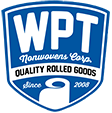Nonwoven fabrics have proven to be highly effective in a wide range of filtration applications. There are many reasons why nonwovens are ideally suited for filtration, including the unique structure and cost efficiency of nonwoven materials. There are several different types of nonwoven materials that are commonly used for filter applications, each with its own advantages and suitability for specific filtration needs. The following are some of the most effective types of nonwovens used for filtration.
Melt-Blown Nonwovens
Melt-blown nonwovens are popular for use in filtration applications due to their high efficiency in capturing small particles. They are made by extruding melted polymer fibers and then stretching them into fine, randomly arranged filaments. In addition to providing excellent particulate capture, melt-blown filters offer high flow rates, and low pressure drops, which makes them suitable for both air and liquid filtration applications.
Spunbond Nonwovens
Spunbond nonwovens are made by extruding continuous filaments of thermoplastic polymers and then bonding them together. They offer good strength, durability, and dimensional stability. Spunbond filters are often used as support layers in combination with other filtration media to provide structural integrity and enhance filtration performance.
Needle-Punched Nonwovens
Created by mechanically interlocking fibers using barbed needles, needle-punched nonwovens are a strong, robust material with good depth filtration capabilities. Filters fabricated from needle-punched nonwovens are typically used in applications where high dirt-holding capacity and good permeability are required, such as industrial air and liquid filtration.
Wet-Laid Nonwovens
Wet-laid nonwovens are manufactured by dispersing fibers in a liquid suspension and then forming them into a sheet. Characteristics of these nonwovens include good uniformity, high porosity, and excellent particle retention. Wet-laid filters are often used for water filtration products, where the removal of smaller particles and impurities is necessary.
Composite Nonwovens
Composite nonwovens combine multiple layers or types of nonwovens to achieve specific filtration requirements. For example, a composite filter may consist of a pre-filter layer (spunbond), a fine filtration layer (melt-blown), and a support layer (spunbond or needle-punched). This combination allows for enhanced filtration efficiency, capacity, and overall performance.
WPT Nonwovens is the Nonwoven Air Filtration Media Specialist
It’s important to note that the choice of the best nonwoven for filter applications depends on various factors, including the specific filtration requirements (e.g., particle size, efficiency, flow rate), the operating conditions, and the targeted application.
As the reliable source American-made source for nonwoven air filtration media, WPT Nonwovens is well positioned to serve producers of a wide variety of filter products Located in Beaver Dam, Kentucky, we serve customers in Kentucky, Indiana, Missouri, North Carolina, Illinois, Oklahoma, Texas, and beyond. We have the biggest, fastest, most technologically advanced production line ever installed for production of nonwovens that are ideal for filtration products.
Please contact us today to discuss your filter media needs.

